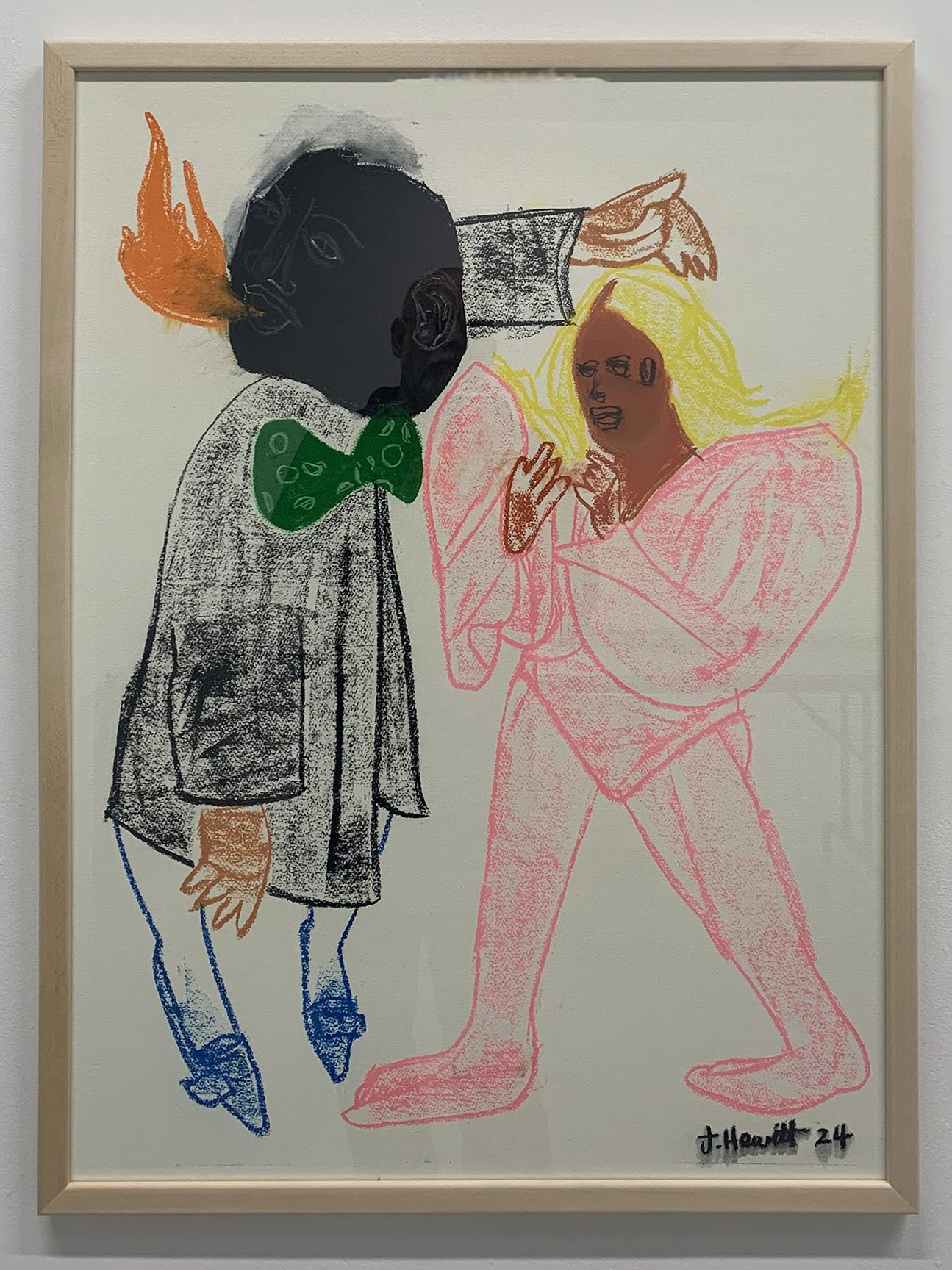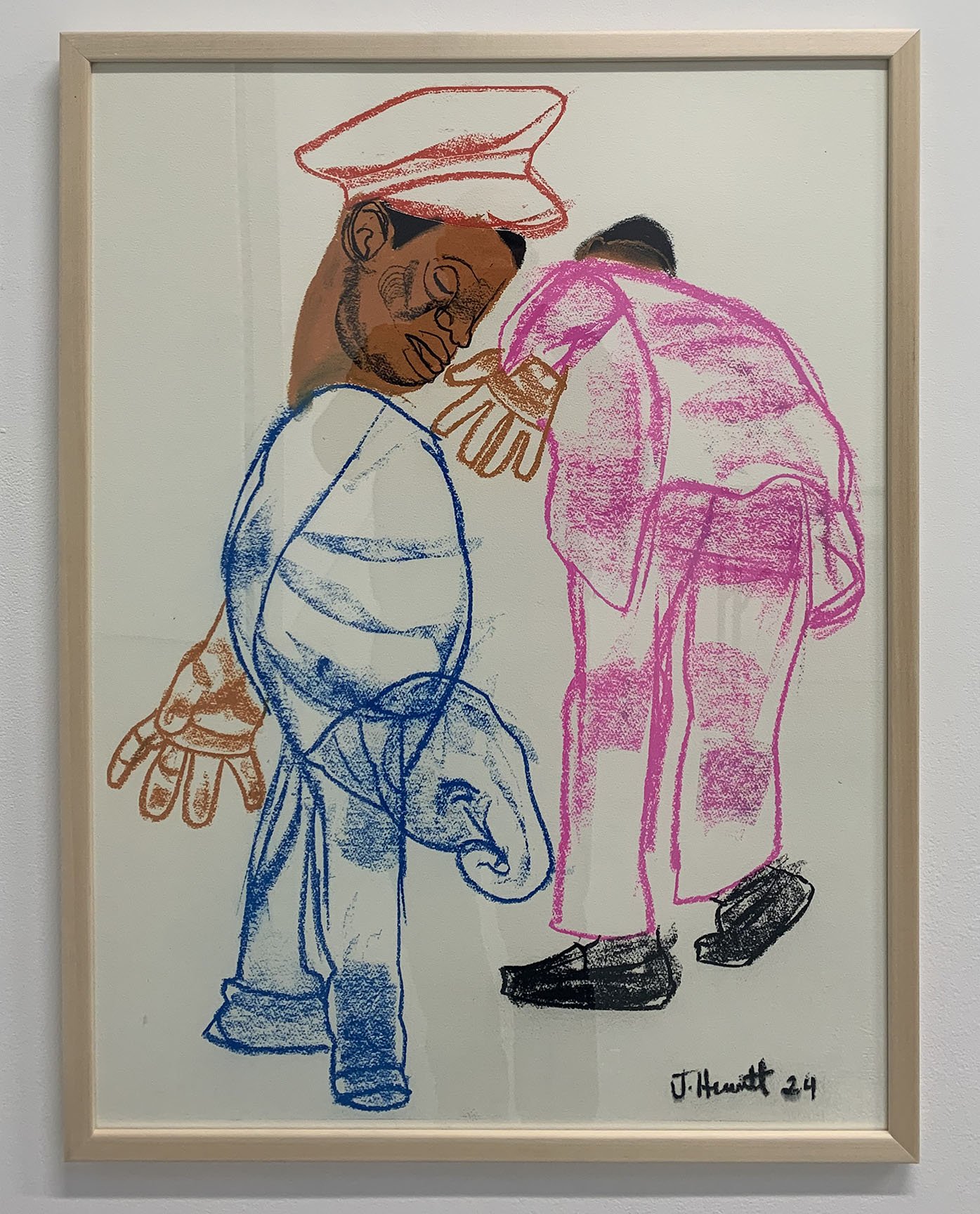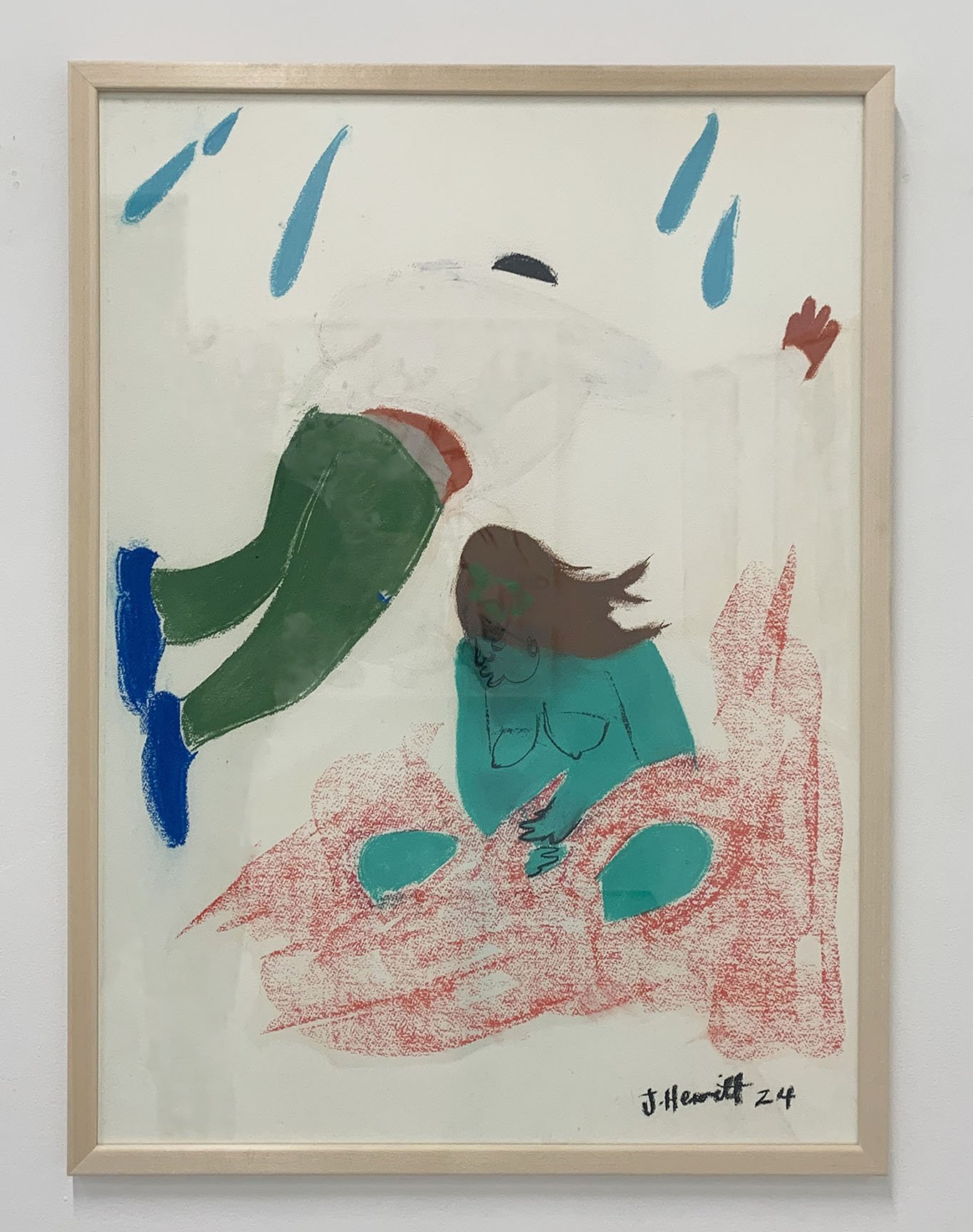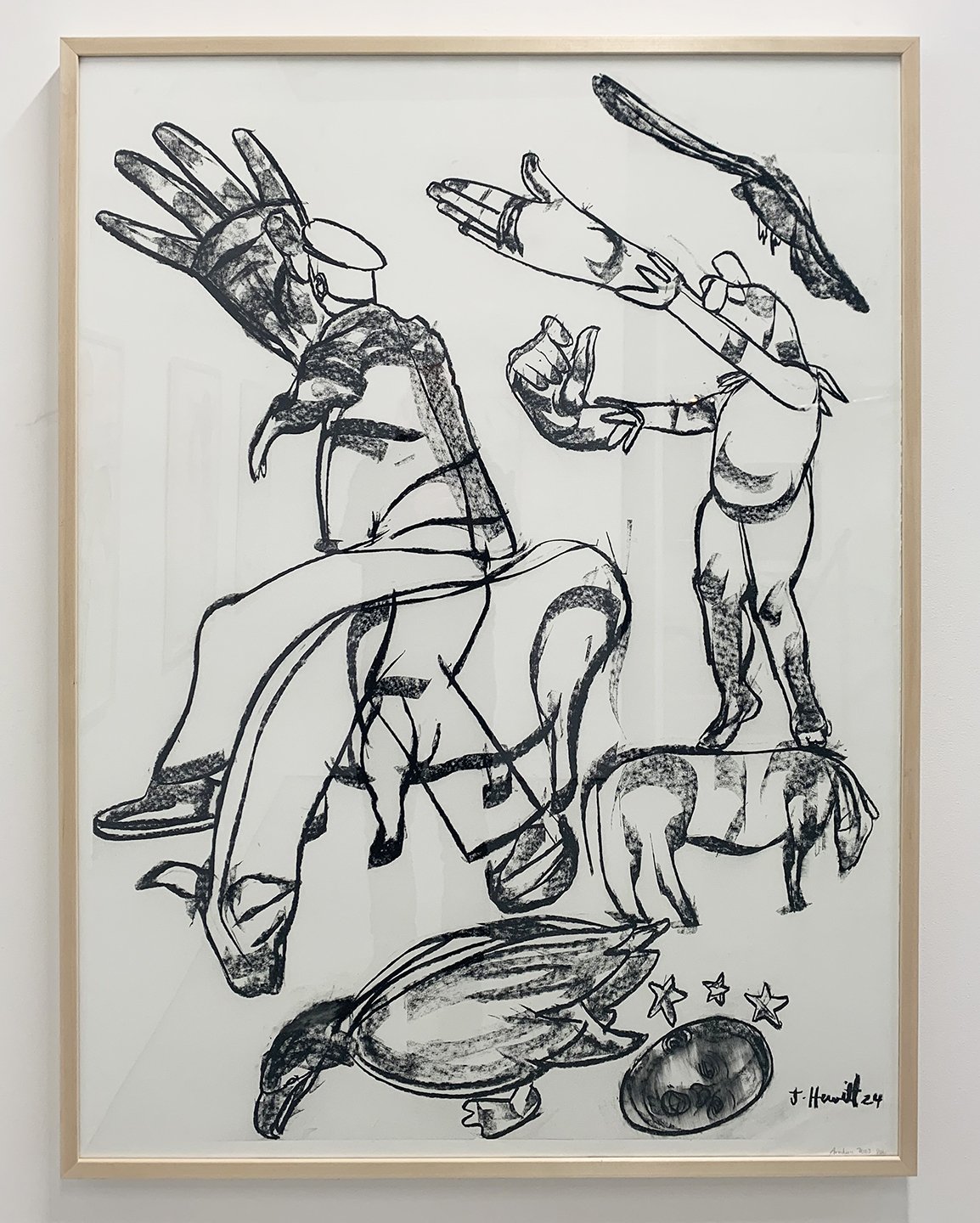Imaginary friends are often a result of a coping mechanism used to endure trauma, loneliness or social disorders, especially in children. In adults, examples of imaginary friendships are found in desperate loneliness and cults; wherein one projects their status with the leader as a friendship or kinship, although this is often false and imaginary. Cults of personality come in the form of celebrity worship and coveting positions of powerful icons, including activists and Art Stars. Desperate people are able to convince themselves that they possess a predisposed or kindred attachment to these leaders. As a nuanced trait in many individuals, Imaginary friends can also be used for strictly entertainment and quirkiness as a form of escapism from a mundane life filled with bland routine.
Elicser Elliott and James Hewitt, through painted and drawn compositions, offer depictions of imaginary friends and the idea of manipulating one’s immediate reality. This can be a tool to combat isolation, loneliness and trauma due to the grim nature of today’s climate, both social and geopolitical. By using techniques of formal distortion, and forging impossible scenes of figurative interaction, Elliott and Hewitt are successful in creating moments of magic and whimsy



